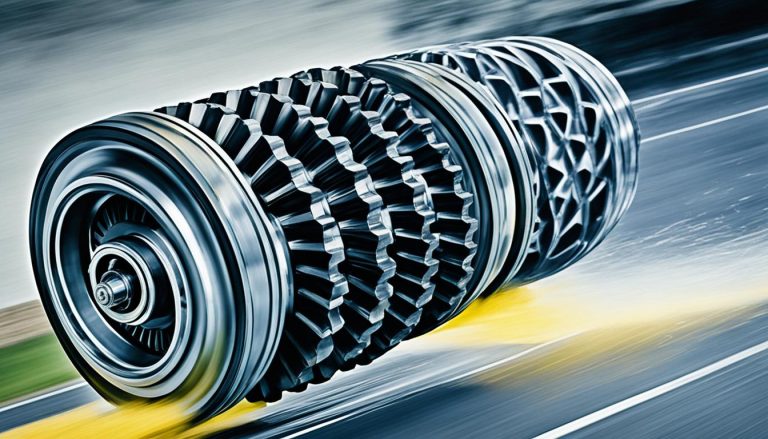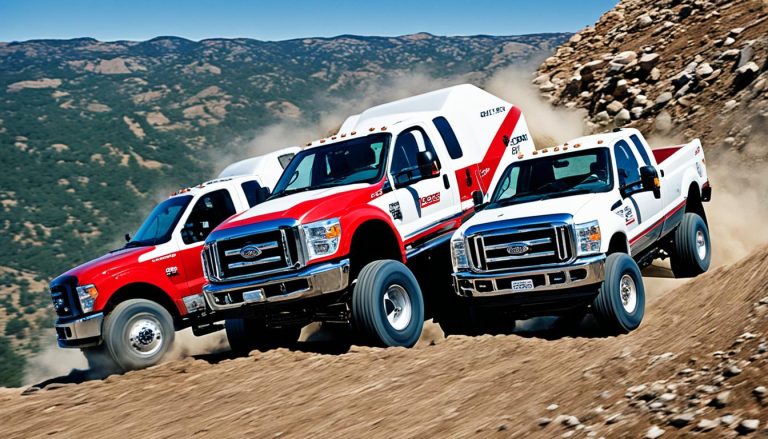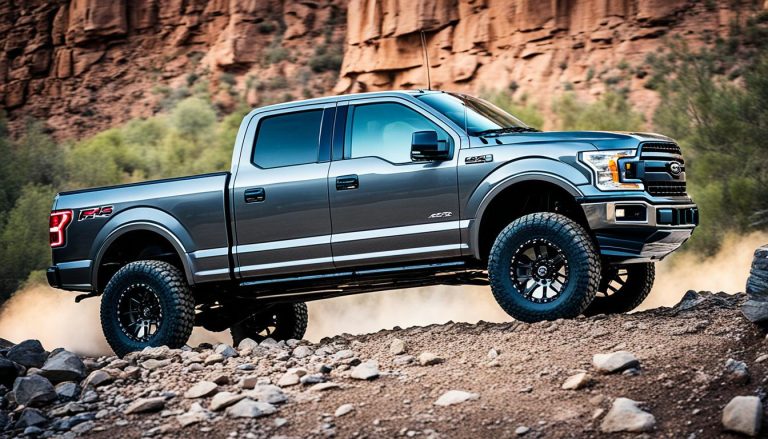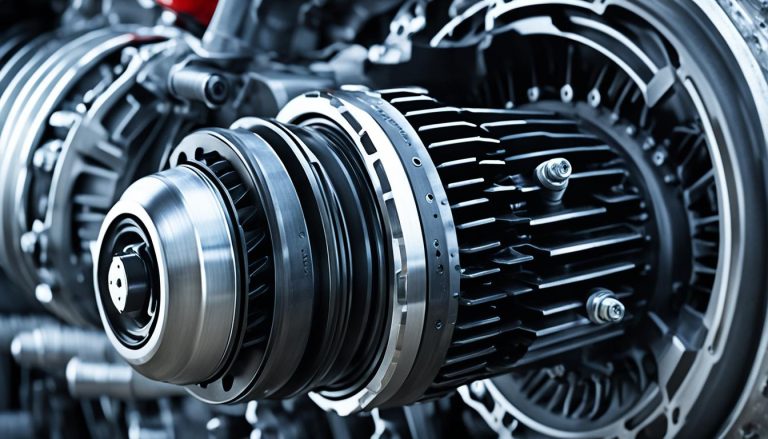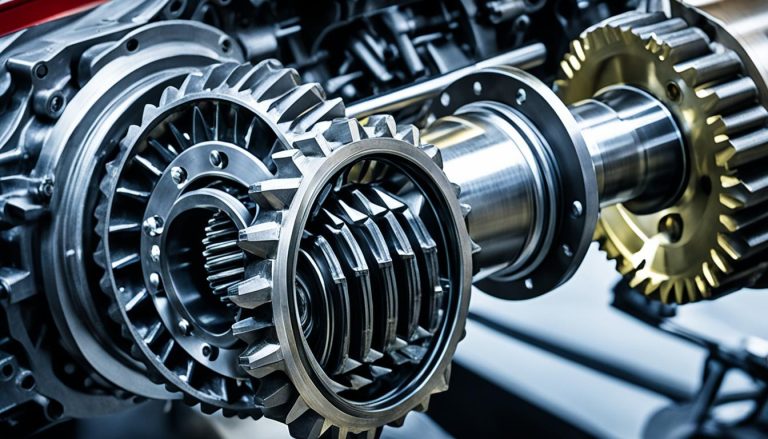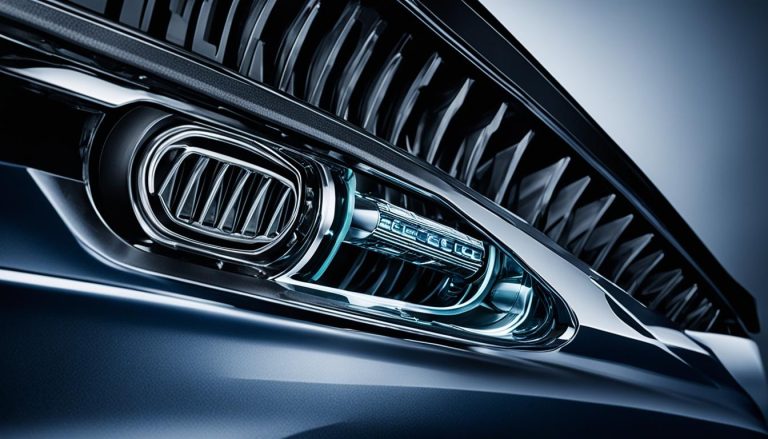Shelby GT500 Diff Troubles? Solve Limited Slip Issues!
If you’re hearing that unsettling Mustang Shelby GT500 differential noise, you’re not alone. Many GT500 enthusiasts have experienced the dreaded moans and groans of Shelby GT500 rear differential problems, particularly during those low-speed turns. It’s not just an aural nuisance; it’s the hallmark of potential GT500 LSD failure symptoms. Before you think about a complete differential overhaul, let’s talk about how you might mitigate these issues yourself.
Often, the culprit behind your GT500’s auditory complaints is the carbon fiber clutches inside the limited slip differential (LSD), an issue that might be alleviated with a fine-tuned approach to your differential fluid and additives. Dealing with these problems doesn’t always have to be a trip to the mechanic; sometimes, the solution may be in the palm of your hand, right in your own garage.
Key Takeaways
- Understand that the Mustang Shelby GT500 differential noise is a common issue, often linked to the LSD clutches.
- Changing differential fluid with the correct synthetic gear oil and friction modifier may help reduce noise without extreme measures.
- Being proactive with noise issues ensures you prevent further Shelby GT500 rear differential problems.
- Keep a keen ear out for those tell-tale GT500 LSD failure symptoms to tackle them early.
- Adequately maintaining your GT500’s LSD can enhance your driving experience and the longevity of your car.
Understanding the Shelby GT500’s Differential Mechanics
If you’re experiencing limited slip differential problems with your Mustang Shelby GT500, it’s crucial to grasp the complex workings of your vehicle’s differential system. The core component that often requires troubleshooting is the differential which uses carbon fiber clutches. These clutches, known for their strength and light weight, are unfortunately prone to produce a moaning sound during low-speed turns in first or second gear. As a powerful car designed for both performance and style, the GT500’s differential should ensure smooth and effective traction under various driving conditions. However, when noise occurs, it suggests the need for a thorough understanding of the differential mechanics to rectify these issues effectively.
The secret to keeping your GT500’s LSD in top shape lies in maintaining the right levels and quality of gear oil, combined with the correct friction modifiers. These elements are fundamental for your differential’s health, reducing noise and enhancing performance. Should you continue facing unresolved limited slip differential problems in your Mustang Shelby GT500, the aftermarket offers solutions such as the Detroit Truetrac, which may substitute the factory LSD without the moaning drawbacks.
- Maintain appropriate gear oil levels and quality
- Use the right friction modifiers for your Shelby’s LSD
- Consider aftermarket options if problems persist
By understanding the nuances of your GT500’s differential mechanics and addressing issues proactively, you can enjoy a quieter, more reliable ride that lives up to the Shelby legacy.
Identifying Common Limited Slip Differential Problems in Shelby GT500
As you enjoy the powerful drive of your Mustang GT500, being aware of potential issues with your vehicle’s limited slip differential (LSD) can save you from future headaches. The key symptoms to monitor include the commonplace moan and groan that may emanate from the rear when taking corners. Let’s delve into diagnosing these noises and what they might indicate about the health of your LSD.
Diagnosing the Typical Moan and Groan
The distinct sound that often accompanies a problematic LSD in your Shelby GT500 is typically described as a moan or groan during low speed maneuvers. This auditory cue is often more pronounced in colder temperatures and following significant repairs or maintenance, suggesting the potential use of incorrect fluids or improper service techniques. Paying close attention to these sounds, especially after visits to the dealership, is crucial for catching issues early on.
Monitoring Symptoms of LSD Failure
Beyond the differential noise, other symptoms may indicate impending LSD failure. These can range from unexpected wheel spin to a complete loss of traction, which is dangerous and counterintuitive to the purpose of an LSD. If you’re experiencing persistent or worsening noise, it’s essential to consider a thorough check-up to prevent more extensive damage.

It’s not uncommon for Shelby GT500 differential noise to be misinterpreted as a transmission issue or dismissed as a normal quirk of your muscle car. However, it is precisely these misdiagnoses that can lead to overlooking more severe problems. Below is a rundown of the symptoms you should track:
| Symptom | Potential Issue | Initial Troubleshooting Steps |
|---|---|---|
| Groaning noise on turns | Worn clutch plates, improper fluid level | Check fluid type and quantity |
| Unexpected wheel spin | Worn differential components | Visual inspection of axles and differential |
| Loss of traction on acceleration | LSD failure, component breakdown | Assess wheel and tire condition, differential test |
| Inconsistent performance in different temperatures | Fluid viscosity issues | Adjust fluid specifications based on climate |
If you’re dealing with any of these common limited slip differential problems in your Shelby GT500, it’s advisable to approach a trusted mechanic or dealership with experience dealing with the intricacies of the GT500’s LSD system. Catching these GT500 LSD failure symptoms early can often mean the difference between a simple fix and a costly overhaul.
Limited Slip Differential Problems Mustang Shelby GT500
If you’re the proud owner of a Mustang Shelby GT500, you might be all too familiar with the unique set of challenges presented by the limited slip differential (LSD) system. Although famed for enhancing traction, the Shelby GT500’s LSD occasionally shows signs of distress that can dampen the joy of your driving experience. Whether you’re hearing noises that bear a stark resemblance to tire rub or finding that your muscle car doesn’t handle tight corners as silently as you’d expect, you’re not alone in your concerns.
Interestingly, these Mustang GT500 LSD problems are not exclusive to a single model year – reports have surfaced from various editions of the GT500, making it a pervasive problem. This has understandably led to potential Shelby buyers questioning not just the durability, but also the reliability of these high-performance vehicles. If you find yourself losing sleep over the Shelby GT500 limited slip differential issues, let’s dive deeper into what might be happening beneath the surface of your GT.
Even when you follow the recommended service protocols to the letter, including timely dealership visits and fluid changes, you might encounter the notorious LSD groan. These unexpected noises can hint at errors during the repair process or indicate that the right fluids were not used. Given the sophisticated components and setup of the GT500’s LSD, any deviation from the standard can lead to complications that manifest as noise or handling issues.
Below is a summary of some common signs that may indicate your GT500 is experiencing LSD problems:
- Unusual groaning or rubbing sounds during low-speed cornering
- Handling that feels less stable than usual, particularly when taking tight turns
- Persistent noises post-dealership servicing that indicate potential mistakes or oversights
These symptoms should not be brushed aside as each could signal an issue that, if not addressed, may escalate into a more serious concern or even premature wear. Remember, the LSD in your Mustang Shelby GT500 is pivotal to its exceptional performance, and maintaining its health is non-negotiable for any serious driver.
While it can be disheartening to face these issues, know that many other GT500 enthusiasts have navigated these waters successfully. The next sections will guide you through troubleshooting steps and how to proactively avoid or mitigate these troubles and keep your beast purring on the road.
DIY Troubleshooting Steps for Your Mustang GT500 LSD
If you’ve been noticing unusual noises from the rear of your Mustang Shelby GT500, it could be indicative of troubleshooting limited slip differential problems. Fear not, as there are a number of do-it-yourself checks and procedures that can help you identify and potentially fix these bothersome sounds without the need for immediate professional intervention.
Checking the Differential Fluid and Additives
The first step in troubleshooting limited slip differential problems in your Mustang Shelby GT500 is to check your differential fluid. You’ll want to make sure you’re using the correct 75-140 synthetic gear oil along with the appropriate amount – a full four ounces – of friction modifier. Incorrect levels or using the wrong type of fluid can not only exacerbate noise but also harm performance. Some GT500 owners have found that replacing their differential fluid with a premium product such as Royal Purple Max Gear oil has significantly reduced noise, suggesting that it could be a successful step in repairing limited slip differentials in the Mustang Shelby GT500.
Inspection of Axles and Seals for Potential Leaks
An equally crucial step in the DIY troubleshooting process is a thorough inspection for potential leaks. Axles and seals are common contributors to Shelby GT500 rear differential problems, and catching these issues early can prevent more severe complications. Pay close attention to the backing plate of the differential to ensure it isn’t making any contact with the rotor or other components, as these points of friction can mimic or cause LSD noise. Promptly attending to any signs of leaking fluids or visible damage can save you the headache and costs associated with major differential repairs.
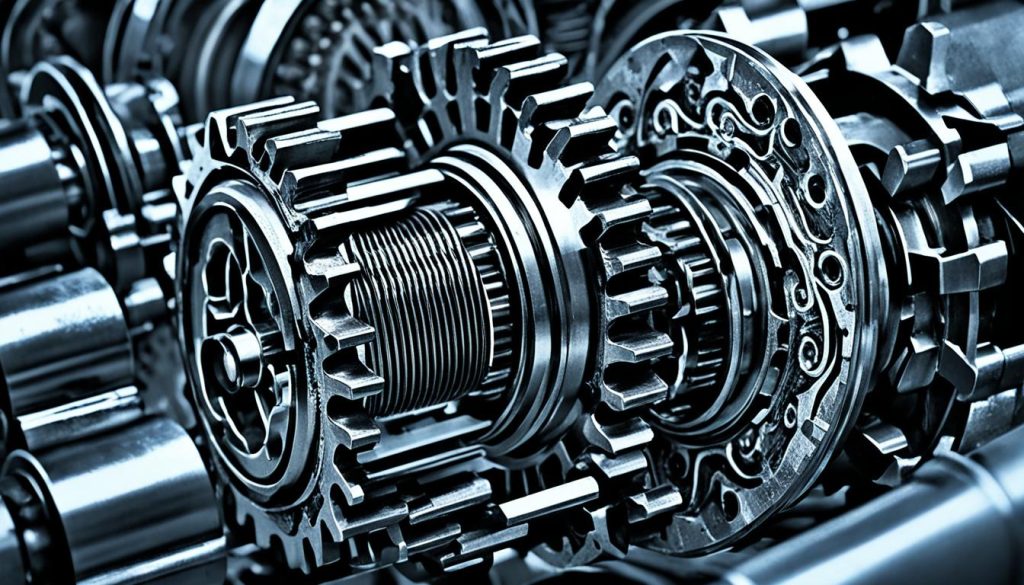
By taking on these troubleshooting steps, you’re not only working towards solving any existing issues with your GT500’s limited slip differential, but you’re also building the knowledge and confidence to maintain and care for your vehicle’s performance over the long term.
When to Consider a Differential Upgrade for GT500
As a Mustang Shelby GT500 owner, addressing Shelby GT500 limited slip differential issues can be a pivotal aspect of your muscle car experience. Persistent typical limited slip differential problems in Mustang GT500 models may lead you to ponder an upgrade to your vehicle’s OEM setup. The decision to move to a high-performance aftermarket LSD should be informed not only by the troubleshooting of limitations encountered but also by the potential gains in durability and performance.
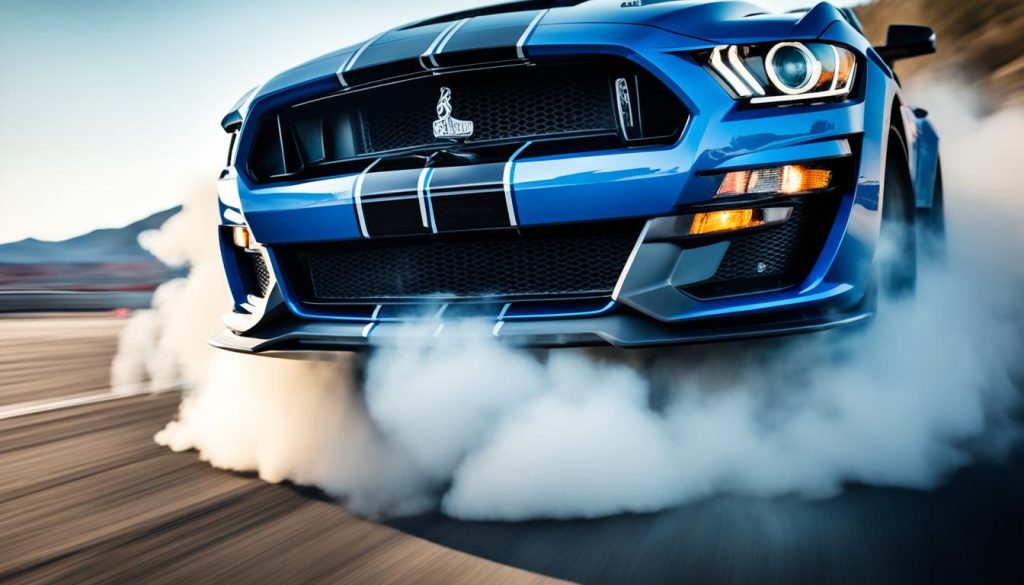
From OEM to Aftermarket: High-Performance Solutions
Consider
- Eaton’s posi unit: Recognized for its solid construction and performance enhancements.
- Detroit Locker: Ideal for those willing to tolerate a bit more noise for unrivaled durability.
- Torsen T-2R: A noisier option that’s known for delivering more consistent power to the wheels.
These aftermarket solutions offer various trade-offs between a quieter ride and robust performance. It’s essential to take these differences into account as well as your own driving demands when considering an LSD upgrade.
Evaluating the Impacts of Temperature on LSD Performance
You’re likely aware that performance can fluctuate with changes in ambient temperature. In colder weather, you may notice an increase in the operational noise of your LSD. This nuanced understanding is crucial when troubleshooting limited slip differential problems in Mustang Shelby GT500 models and evaluating whether an upgrade can offer a reliable solution to temperature-induced viscosity changes.
| OEM LSD | Aftermarket Upgrades |
|---|---|
| Stock performance aligned with factory specifications | Enhanced durability and potentially greater traction |
| Typically quieter operation | May introduce additional noise during operation |
| Affected by extreme temperature variations | Customizable options may perform better under varying conditions |
An LSD upgrade can be a significant investment in the performance and enjoyment of your Shelby GT500, factoring in the implications of temperature on your vehicle’s rear end. As always, it’s beneficial to consult with experts and fellow enthusiasts when making modifications that are as integral as the limited slip differential. Ensuring your muscle car maintains its edge on the road is paramount, and careful consideration of these upgrades can promote a more exhilarating and dependable driving experience.
Expert Tips on Preventing Rear Differential Complications
As an enthusiast of the Mustang Shelby GT500, you understand that the thrill of commanding such powerful machinery comes with a responsibility to maintain it well. Dealing with Shelby GT500 rear differential problems can be a hassle, but with careful troubleshooting and preventative care, you can avoid the headache of troubleshooting limited slip differential problems in Mustang Shelby GT500. Here are some expert tips to help you prevent complications before they arise:

- Adhere strictly to the specified gear oils and friction modifiers designed for your GT500’s LSD. This precision can significantly reduce typical noises and prevent excess wear.
- Conduct routine inspections of your rear differential to catch issues early on.
- Always consider the effects of ambient temperature changes on the differential fluid’s performance.
- Stay proactive about the maintenance schedule and address any signs of trouble immediately.
Below, find a detailed overview of key maintenance routines you should embrace to keep your rear differential running smoothly:
| Maintenance Task | Benefits | Frequency |
|---|---|---|
| Differential Fluid Check/Change | Ensures proper lubrication and reduces wear. | Check every 10,000 miles/Change every 30,000 miles |
| Inspection of Driveshafts and Seals | Identifies leaks and potential failures early. | Check every oil change or at signs of leaks. |
| Addition of Correct Friction Modifier | Maintains clutch pack health and operation. | With every differential fluid change. |
| Awareness of Temperature Effects | Improves response to viscosity changes due to weather. | Seasonal checks, especially in extreme climates. |
Remember, staying ahead of potential issues not only provides peace of mind but also ensures that your Mustang Shelby GT500 remains the performance beast it’s renowned to be. Let these expert tips guide you in preventing rear differential problems and maintaining your limited slip differential in top condition.
The Role of Professional Diagnosis in Resolving GT500 Differential Noise
If you’re grappling with typical limited slip differential problems in your Mustang GT500, pinpointing the issue accurately is paramount. Engaging a professional with in-depth knowledge of troubleshooting limited slip differential problems in Mustang Shelby GT500 is your next strategic move. Mechanics skilled with the nuances of Shelby GT500 rear differential problems can offer solutions that DIY efforts might miss. The rear 8.8 differential your GT500 touts is complex—an experienced ear will discern Mustang Shelby GT500 differential noise from other potential issues.
Choosing the Right Shop: Experience with Ford 8.8 Rear Ends
When selecting the right service shop, it’s critical to inquire about their experience with Ford’s 8.8 rear ends. Shops with a proven track record in handling GT500 LSD failure symptoms understand the specific demands of your vehicle’s setup. Experienced technicians will be adept at managing the specialized bearings, seals, and configurations that define your Shelby’s differential, assuring an accurate and effective noise resolution.
Cost Considerations and Ensuring Quality Repairs
While cost is a consideration, don’t let it be the deciding factor. The longevity and performance of your GT500 hinge on quality repairs. Assess the value of genuine Ford Racing Performance Parts (FRPP) and skilled labor. Shops may offer services at varying prices, but comprehensive work around $650 for both parts and labor reflects both quality and value. Post-repair, ensure the use of tuners like SCT is discussed to fine-tune your vehicle’s parameters, optimizing your Shelby for its refreshed setup.
FAQ
What are the symptoms of LSD failure in a Mustang Shelby GT500?
Symptoms can include a moan or groan noise during slow-speed turns in low gears, which may resemble loud tire rub, differential noise during operation, and changes in sound frequency with ambient temperature fluctuations. These noises can sometimes lead to misdiagnosis as they may seem related to the transmission or affected by temperature.
Is it normal to hear differential noise from my Shelby GT500?
While Ford has indicated that some noise may be normal, persistent or pronounced moaning or groaning sounds, particularly during first or second gear low-speed turns, could indicate a problem with the limited slip differential. It’s advisable to have this checked, especially if the sound becomes embarrassing or occurs frequently.
Can changing the differential fluid help with LSD issues in the Shelby GT500?
Yes, ensuring the use of the correct 75-140 synthetic gear oil and the proper amount of friction modifier can potentially alleviate noise issues without a complete differential swap. DIY enthusiasts have had success with high-quality oils like Royal Purple Max Gear and proper maintenance practices.
How does ambient temperature affect the Mustang GT500’s LSD performance?
Ambient temperature can impact the LSD’s performance by altering the viscosity of differential fluids, making noises more noticeable in varying temperature conditions. Recognizing this factor is important for understanding and diagnosing common limited slip differential problems in your GT500.
When should I consider upgrading the differential in my Mustang GT500?
If you experience persistent problems with your OEM limited slip differential, and routine maintenance isn’t resolving the issue, it may be time to consider upgrading to a high-performance aftermarket LSD, such as an Eaton posi unit, a Detroit Locker, or the Torsen T-2R, keeping in mind they might introduce more noise during operation.
What steps can I take to prevent rear differential complications in my Shelby GT500?
Regular inspections, proper fluid maintenance, considering ambient temperature changes, and using specified gear oils and friction modifiers can mitigate noises and wear. It’s important to maintain your LSD correctly to avoid premature failures of components like the clutch packs.
How important is it to choose the right shop for resolving Mustang GT500 differential noise?
Selecting a shop with significant experience with Ford’s 8.8 rear ends is crucial, as these experts are better equipped to handle the specialized bearings, seals, and setup required. Relying on reputable performance shops with ample differential experience is advisable for effective and efficient noise resolution.
What are the cost considerations when diagnosing and repairing Shelby GT500 differential problems?
You must consider the cost of parts, such as the Ford Racing Performance Parts gears, along with the labor fees associated with quality workmanship. Prices can vary, but it’s recommended to prioritize comprehensive service to ensure the longevity and optimal performance of your GT500’s LSD.

